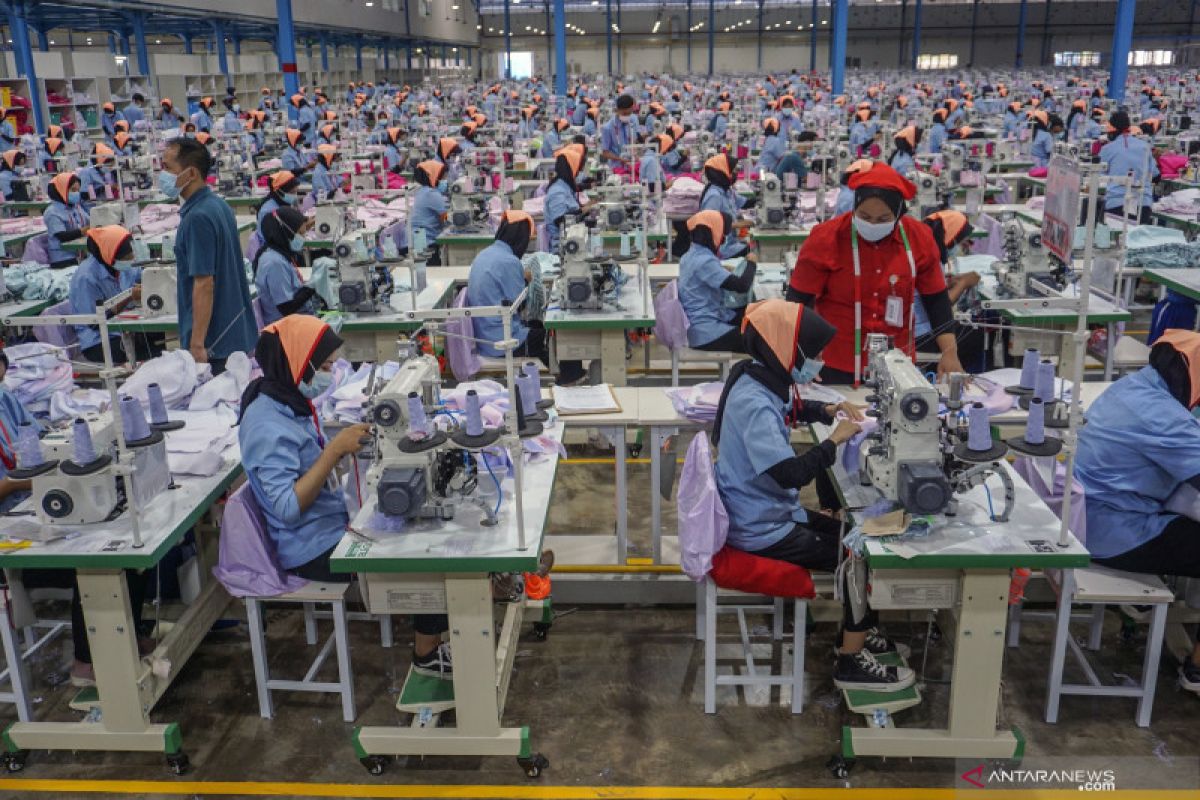The Challenges In Garments Sector Of Bangladesh
In the bustling world of Bangladesh’s ready made garments sector, there are numerous challenges that both individuals and businesses face on a daily basis. With a massive workforce and a thriving industry, it is essential to understand and address these obstacles to ensure the continued growth and success of this vital sector. From intense competition to labor rights issues, this article explores the various challenges that shape the landscape of Bangladesh’s ready made garments industry.
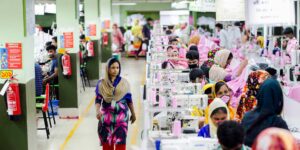
Competition from other countries
Global competition
In today’s globalized world, the ready-made garments sector in Bangladesh faces intense competition from other countries. As more and more nations enter the garment manufacturing industry, it becomes increasingly difficult for Bangladesh to maintain its market share. Countries like China, India, Vietnam, and Cambodia are emerging as strong competitors in the global market. They offer similar products at competitive prices, making it challenging for Bangladesh to stand out. To overcome this challenge, Bangladesh needs to focus on enhancing its productivity, improving product quality, and diversifying its product range.
Cheap labor in other countries
One of the major challenges faced by the ready-made garments sector in Bangladesh is the availability of cheap labor in other countries. Countries like China and Cambodia offer lower labor costs, making their products more affordable for buyers. This puts pressure on Bangladesh to keep its labor costs low while maintaining fair wages for workers. To remain competitive, Bangladesh needs to invest in skill development programs to enhance the productivity of its workforce and explore ways to reduce production costs without compromising on workers’ rights.
Trade agreements and tariffs
Trade agreements and tariffs also pose challenges for the ready-made garments sector in Bangladesh. Changes in international trade policies and the imposition of tariffs can significantly impact the industry’s profitability. Bangladesh heavily relies on exports to sustain its garment sector, and any barriers to trade can have adverse effects. Additionally, trade agreements between other countries can redirect the flow of orders, potentially reducing the market share for Bangladeshi garments. To mitigate this challenge, Bangladesh needs to actively participate in trade negotiations, diversify its export markets, and explore new trade partnerships.
Labor issues
Low wages
The issue of low wages is one of the key challenges in the ready-made garments sector of Bangladesh. Despite the significant contribution of the industry to the country’s economy, many workers in Bangladesh’s garment factories earn wages that are below the living wage. This not only affects the quality of life for the workers and their families but also raises ethical concerns within the global supply chain. Addressing this challenge requires a collective effort from stakeholders, including government bodies, factory owners, and international brands, to ensure fair wages and improve workers’ livelihoods.
Unsafe working conditions
Another critical challenge in the ready-made garments sector is the presence of unsafe working conditions. Overcrowded factories, lack of proper ventilation, inadequate fire safety measures, and poor building structures all contribute to hazardous working environments. Tragic incidents, such as the Rana Plaza collapse in 2013, highlighted the need for urgent reforms to ensure worker safety. The government, factory owners, and international buyers need to work together to enforce strict safety regulations, conduct regular inspections, and invest in infrastructure improvements to eliminate these risks.
Lack of workers’ rights
The lack of workers’ rights presents another significant challenge in Bangladesh’s ready-made garments sector. While some progress has been made in recent years, there are still concerns about the violation of workers’ rights, including issues like excessive overtime, denial of sick leave, and restrictions on freedom of association. Strengthening workers’ rights protection requires active collaboration between the government, trade unions, factory owners, and international brands. It is crucial to establish mechanisms that ensure the empowerment and fair treatment of workers, including the formation of independent trade unions and improved grievance mechanisms.
Infrastructure constraints
Inadequate transportation
Bangladesh’s ready-made garments sector faces challenges due to inadequate transportation infrastructure. Limited transportation options and poor road conditions not only hinder the movement of goods within the country but also affect the timely delivery of garments to export markets. This can lead to delays in meeting buyer demands and ultimately impact the country’s export competitiveness. To address this issue, investments are needed in improving transportation networks, including road and rail connectivity, and developing efficient logistics and supply chain management systems.
Power shortages
Power shortages are a significant infrastructure constraint faced by the ready-made garments sector in Bangladesh. Frequent electricity disruptions and load shedding cause disruptions in production schedules, impacting efficiency and productivity. Uninterrupted power supply is essential for operating garment factories, especially in maintaining proper lighting, running sewing machines, and supporting essential technology and machinery. The government needs to focus on improving power generation capacity, ensuring a stable and reliable electricity supply, and exploring renewable energy options to reduce dependency on traditional power sources.
Limited technology and machinery
The limited availability of advanced technology and machinery is another challenge faced by the ready-made garments sector in Bangladesh. While the industry has made progress in adopting modern equipment, there is still a need for further investment in technology upgrades. Advanced machinery can enhance productivity, improve product quality, and reduce production costs. Additionally, technological advancements can enable innovations in the sector, such as automation and digitalization. The government and industry stakeholders should prioritize investment in research and development, provide incentives for technology adoption, and facilitate knowledge transfer to overcome this challenge.
Supply chain complexities
Inefficient logistics
The ready-made garments sector in Bangladesh faces supply chain complexities, with inefficient logistics being a significant challenge. Poor transport infrastructure, congested ports, and inadequate warehousing facilities can lead to delays in the movement of raw materials, components, and finished products. This can result in missed delivery deadlines and increased costs, impacting the industry’s competitiveness. Improving logistics infrastructure, enhancing coordination among stakeholders, and implementing efficient supply chain management practices are crucial to overcome this challenge.
Lack of raw material availability
Limited availability of raw materials is another challenge faced by Bangladesh’s ready-made garments sector. The industry heavily relies on imports for key inputs, such as fabric, yarn, and accessories. Disruptions in the global supply chain, including trade barriers and price fluctuations, can affect the availability and cost of raw materials, causing challenges for garment manufacturers. To mitigate this risk, Bangladesh should strive for diversification of raw material sources, promote domestic production of key inputs, and establish strategic partnerships with reliable suppliers.
Dependency on imports
The ready-made garments sector in Bangladesh is highly dependent on imports, which poses challenges in terms of cost, availability, and risks associated with foreign exchange fluctuations. Factors like varying import taxes and currency exchange rates can significantly impact the cost of imported goods, affecting overall profitability. To minimize this challenge, Bangladesh should focus on developing domestic industries for producing essential inputs, such as fabrics and accessories, reducing dependency on imports, and ensuring currency stability through appropriate fiscal and monetary policies.
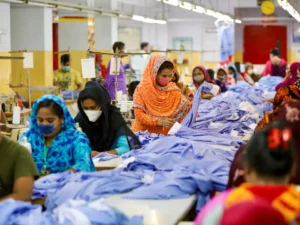
Quality control and compliance
Poor quality products
Ensuring consistent product quality is a challenge faced by the ready-made garments sector in Bangladesh. While the industry produces a vast quantity of garments, maintaining uniformity in product standards can be difficult. Quality issues, such as inconsistencies in sizing, stitching defects, and fabric irregularities, can affect buyer satisfaction and reputation. To address this challenge, Bangladesh needs to invest in quality control mechanisms, including training programs for workers, adoption of international quality standards, and regular inspections to ensure adherence to quality requirements.
Lack of adherence to international standards
Adherence to international standards and compliance requirements is crucial for the ready-made garments sector. Buyers demand compliance with social and environmental standards to ensure ethical and sustainable production practices. Non-compliance can lead to the loss of business opportunities and reputational damage. Bangladesh needs to strengthen regulatory frameworks, enhance monitoring and enforcement mechanisms, and promote awareness among factory owners and workers about the importance of compliance to meet international standards.
Ethical and environmental concerns
Ethical and environmental concerns are significant challenges in Bangladesh’s ready-made garments sector. Issues like child labor, forced labor, and unsafe working conditions raise ethical questions within the global supply chain. Additionally, environmental impacts, such as water pollution and excessive energy consumption, need to be addressed. Bangladesh should prioritize ethical sourcing practices, provide training and capacity-building programs on labor rights and environmental sustainability, and work towards establishing a circular economy approach to reduce waste and promote resource efficiency.
Lack of innovation and design capabilities
Copying and imitation
The lack of innovation and design capabilities is a challenge faced by the ready-made garments sector in Bangladesh. The industry often struggles with a perception of being a hub for copying or imitating designs rather than creating original and unique products. This limits its ability to differentiate itself in the global market. To overcome this challenge, Bangladesh should invest in design education and training, foster collaborations between designers and manufacturers, and encourage creativity and innovation within the industry.
Limited research and development
Research and development (R&D) activities in the ready-made garments sector in Bangladesh are limited. The industry predominantly focuses on manufacturing and exporting, with less emphasis on R&D for product or process innovation. This restricts the sector’s ability to develop new technologies, improve production techniques, and introduce innovative products. Bangladesh should allocate resources for R&D, promote public-private collaborations in research initiatives, and establish innovation centers to drive technological advancements and foster design excellence.
Lack of creativity
The lack of creativity is a challenge that hinders the growth of Bangladesh’s ready-made garments sector. Creativity plays a crucial role in designing unique and fashionable products that can captivate international buyers. Emphasizing creativity requires fostering a culture of innovation, encouraging designers to explore their creative ideas, and providing platforms for showcasing and promoting creative talent. Bangladesh should invest in design-led initiatives, organize fashion events and exhibitions, and create opportunities for collaboration between designers, manufacturers, and international buyers to enhance creativity within the industry.
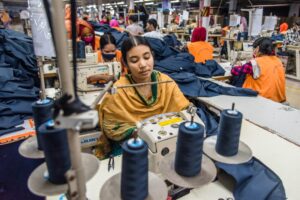
High dependency on external markets
Vulnerability to changes in global demand
The ready-made garments sector in Bangladesh is highly vulnerable to changes in global demand. Fluctuations in the economic conditions of major export destinations can significantly impact the industry’s order volume and revenue. Changes in fashion trends and consumer preferences can also influence demand for specific garment categories. To reduce this vulnerability, Bangladesh should diversify its export markets, target niche segments, and explore opportunities in emerging markets. Fostering sustainable relationships with existing buyers and adopting agile production systems can also help adapt to fluctuations in global demand.
Fluctuating exchange rates
Fluctuating exchange rates are another challenge faced by Bangladesh’s ready-made garments sector. Exchange rate volatility can affect the cost of imported raw materials and impact the competitiveness of exported products. Sudden currency depreciations can lead to increased production costs, reducing profit margins for manufacturers. To mitigate this challenge, Bangladesh should develop appropriate hedging mechanisms to manage currency risks, maintain stable monetary policies, and explore opportunities for currency swaps and trade settlements in local currencies.
Trade barriers
Trade barriers, such as import quotas, tariffs, and non-tariff barriers, pose challenges for Bangladesh’s ready-made garments sector. Measures imposed by importing countries can restrict market access and increase the cost of exporting garments. Compliance with varying regulatory requirements and standards can be burdensome for manufacturers, especially for small and medium-sized enterprises. Bangladesh should actively engage in trade negotiations, diversify export markets, and promote regional trade agreements to overcome trade barriers and ensure sustained growth in the sector.
Inadequate government support
Insufficient policy framework
The ready-made garments sector in Bangladesh faces challenges due to an inadequate policy framework. To sustain and expand the industry, a supportive regulatory environment is crucial. However, there is a need for comprehensive policies addressing various aspects, including trade facilitation, labor rights, infrastructure development, and skill development. The government should develop a robust policy framework, consult with industry stakeholders, and ensure effective implementation of policies to provide an enabling business environment for the sector.
Inconsistent regulations
Inconsistent regulations pose challenges for the ready-made garments sector in Bangladesh. Frequent changes in regulations, lack of clarity, and overlapping responsibilities of government agencies can create confusion and hinder business operations. Streamlining regulations, ensuring transparency, and establishing clear guidelines for compliance can help create a more predictable and favorable regulatory environment. The government should actively engage with industry stakeholders, simplify business processes, and ensure coordination among different regulatory bodies to address this challenge.
Lack of incentives
The lack of sufficient incentives is another challenge faced by Bangladesh’s ready-made garments sector. Incentives, such as tax breaks, subsidies, and financial support, play a vital role in attracting investments and promoting industry growth. Bangladesh needs to review and enhance its incentive schemes, with a focus on supporting small and medium-sized enterprises, promoting innovation and technology adoption, and incentivizing sustainable and responsible business practices. Providing access to affordable financing options and supporting capacity-building initiatives can also contribute to overcoming this challenge.
Limited access to finance
High interest rates
Access to affordable financing is a challenge faced by the ready-made garments sector in Bangladesh. High interest rates and collateral requirements make it difficult for small and medium-sized enterprises to access the necessary funds for business expansion and investment in modern machinery and technology. Lowering interest rates, introducing flexible lending terms, and creating specialized financing schemes for the sector can encourage more companies to invest and upgrade their operations. Collaboration between financial institutions, the government, and industry associations is essential to address this financing gap.
Limited access to loans
Limited access to loans is another financial challenge for the ready-made garments sector in Bangladesh. Banks and financial institutions often have strict criteria and lengthy approval processes, making it challenging for garment manufacturers to obtain loans. This hampers their ability to invest in capacity-building, technology upgrades, and diversification. Developing specialized loan programs tailored to the needs of the sector, improving credit assessment frameworks, and encouraging the provision of working capital loans can enhance access to finance and support industry growth.
Lack of investment in the sector
The lack of sufficient investment is a significant challenge for the ready-made garments sector in Bangladesh. Investments are vital for expanding production capacity, adopting advanced technologies, and improving infrastructure. However, the sector faces challenges in attracting both domestic and foreign direct investments. To address this challenge, Bangladesh should create a conducive investment climate by offering attractive incentives, simplifying investment procedures, and providing support and facilitation services to potential investors. Encouraging public-private partnerships and diversifying sources of funding can also help stimulate investment in the sector.
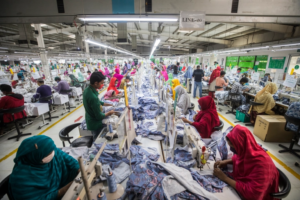
Sustainability challenges
Water pollution and wastage
Sustainability challenges, such as water pollution and wastage, are significant concerns in Bangladesh’s ready-made garments sector. The industry consumes a substantial amount of water in various processes, leading to water pollution through the discharge of untreated or inadequately treated wastewater. Adopting sustainable water management practices, investing in wastewater treatment facilities, and promoting water-efficient production techniques are essential to minimize the sector’s impact on water resources and protect the environment.
Energy consumption
Energy consumption is another sustainability challenge in the ready-made garments sector. High energy requirements for production processes, including heating, lighting, and operating machinery, contribute to increased greenhouse gas emissions. Bangladesh needs to focus on improving energy efficiency within the sector by promoting the use of renewable energy sources, educating manufacturers on energy-saving practices, and implementing energy management systems. Encouraging the adoption of clean and energy-efficient technologies can help reduce the environmental footprint of the industry.
Worker health and safety
The health and safety of workers is a critical sustainability challenge in Bangladesh’s ready-made garments sector. Ensuring a safe and healthy working environment is not only a moral obligation but also crucial for the long-term sustainability of the industry. Implementing occupational health and safety regulations, conducting regular safety audits, and providing training on workplace hazards and preventive measures are essential steps to protect workers’ well-being. Collaboration between the government, factory owners, trade unions, and international brands is necessary to address these concerns and promote responsible business practices.
In conclusion, the ready-made garments sector in Bangladesh faces a multitude of challenges across various dimensions. From global competition and labor issues to infrastructure constraints and sustainability challenges, the industry must navigate through a complex landscape to sustain growth and remain competitive. With a concerted effort from all stakeholders, including the government, factory owners, workers, and international buyers, Bangladesh can overcome these challenges and position itself as a leading player in the global ready-made garments sector.

